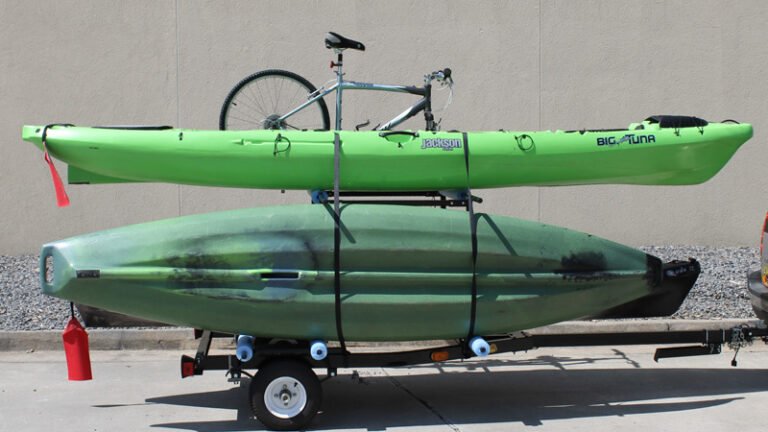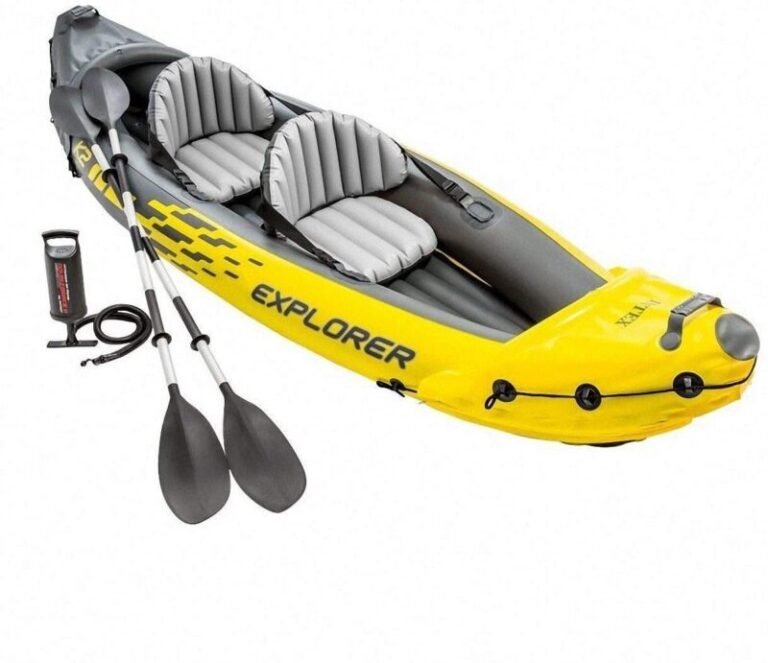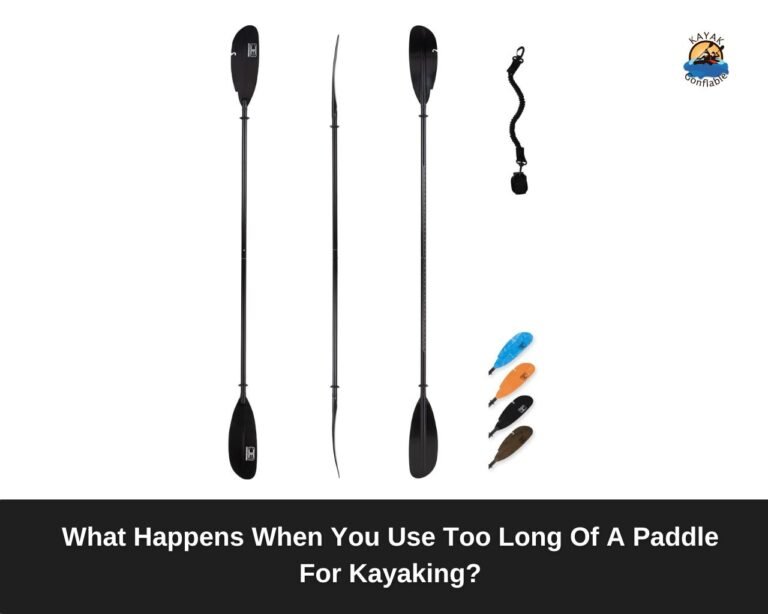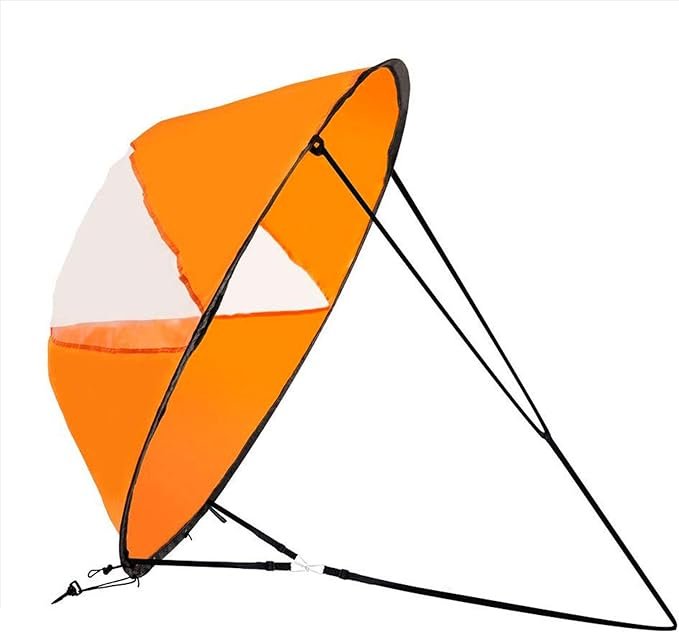How To Transport A Kayak On A Small Car
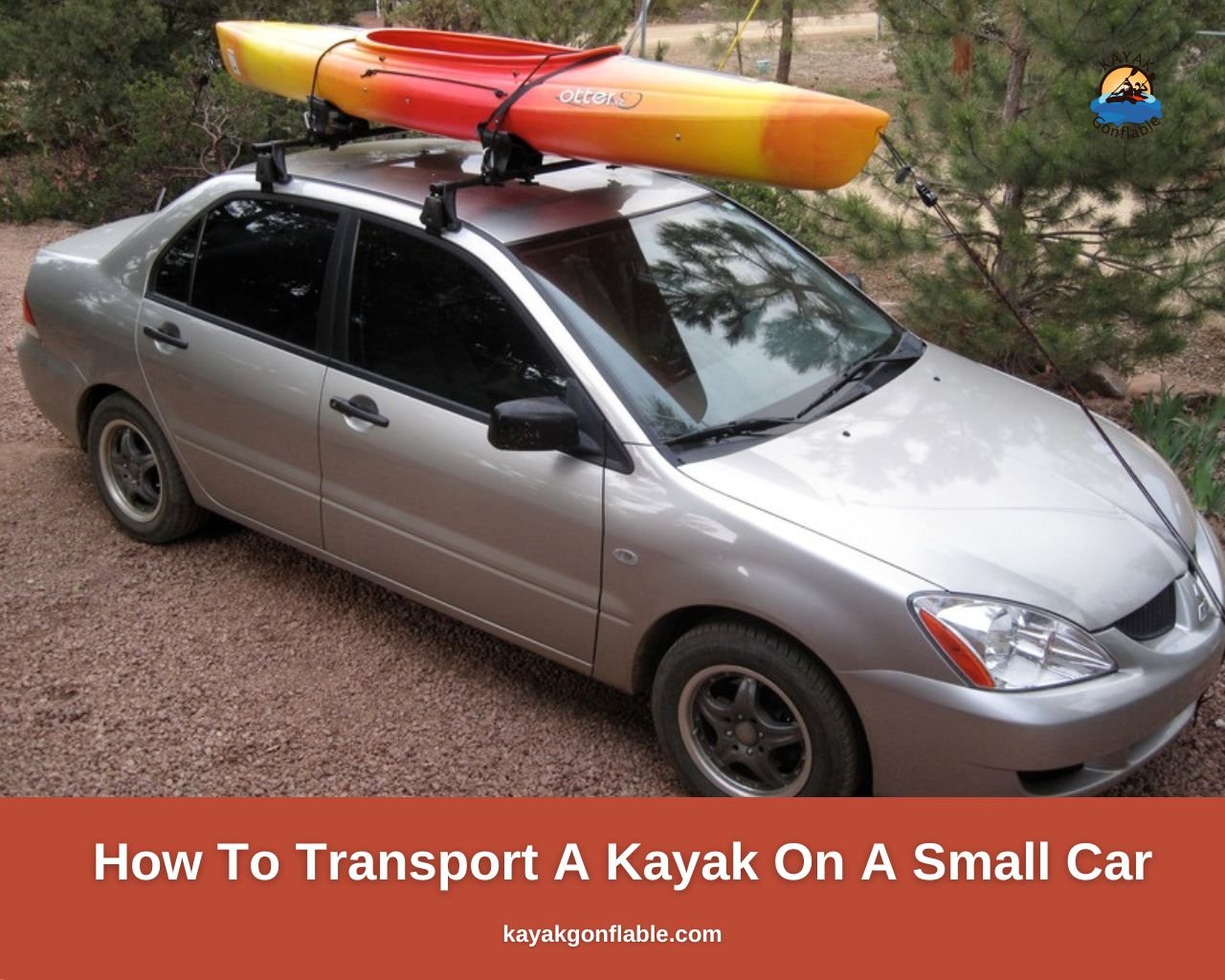
Kayaking is fun, and once hooked, you just have to find your way back to the water for another great time. Thus, it is no surprise that, sooner rather than later, most kayakers end up getting kayaks of their own.
Owning a kayak is great; it means you can hit the water whenever you please and paddle to your heart’s content. However, there is a catch.
You can’t kayak if your kayak is not in the water, and if you don’t live near a body of water, you have to find a way to move your kayak to get the satisfaction of paddling.
Several ways of transporting a kayak exist, but if you are here, you most likely have a small car and are wondering if it will be possible to use it to move your kayak safely from one place to the other.
The answer is yes. It is indeed possible to safely transport kayaks with small cars. The next dilemma is how to accomplish this task, but fear not!
This article comes to your aid and contains all the necessary information you need to safely transport your kayak, so dive in and enjoy.
How To Determine Whether Your Kayak Is Too Big For Your Car?
While transporting a kayak on a small car is possible, you first have to check to see if your kayak and vehicle are compatible.
If they are not compatible, transporting the kayak with that car may still be possible, but it would be very unsafe and could jeopardize the safety of your kayak and other people on the road.
Transporting your kayak in an unsafe way could also get you into trouble with law enforcement, so checking whether or not your kayak is too big for your car cannot be overemphasized.
Determining whether your kayak is too big for your vehicle can be done in three ways that are explained below.
1. Check The Length Of The Kayak
The first and most obvious problem you can have with transporting your kayak on your small car is the kayak being longer than the car. Usually, even long kayaks can be transported on the roofs of small cars, whether you are using a kayak rack or not.
Also, the length of the kayak won’t be a hindrance if you decide to use a kayak trailer. However, if you want to transport the kayak by sticking it into your car, the length becomes very important.
If after loading the kayak, more than half of it hangs out, do not transport it in that manner. The reason is that if you have more than half of the kayak hanging out of the vehicle, it will leave most of the kayak’s weight unsupported and that would create unsafe transport conditions.
It is also a good idea to be aware of all laws in your state, along your travel route, and at your destination concerning transporting kayaks to avoid your trip being interrupted by law enforcement.
These laws, such as the one in most states that demands you attach a bright flag to anything that extends past the rear of your vehicle or trailer, exist to ensure safety on the road.
So always consider them before choosing a transportation method for your kayak and make sure you obey them.
2. Check The Weight Of The Kayak
The next problem has to do with the kayak’s weight. If you favor transporting your kayak on the roof of your vehicle, with or without a roof rack, you have to first make sure your car’s roof can handle the kayak’s weight, especially if you own a heavy kayak.
This part of the equation is often easy as most kayaks are not all that heavy, but if you own a fishing kayak, be sure to check with your car’s manufacturer to be sure the car’s roof can handle the weight. If you don’t, you could end up with a damaged car and kayak.
Checking the kayak’s weight is also crucial because if you will be transporting it on the roof, you have to be able to lift the vessel over your head to load it onto the car roof, and if it is too heavy, you could injure yourself and possibly damage your kayak in the process.
The weight of the kayak also has an impact when unloading the kayak, so be sure to consider it when choosing your transportation method.
3. Check Your Car’s Towing Capacity
This requirement is a must for those who prefer transporting their kayak by towing it in a kayak trailer and should not be taken lightly.
If you insist on towing a kayak trailer with your small car and the force required for the task is not within the car’s towing capacity, you will be putting too much stress on the car’s engine and body parts.
That is a perfect recipe for the early demise of any vehicle. There is also the risk of the vehicle giving out on you and possible damage to your kayak because of it.
How To Transport A Kayak On A Small Car
Transporting a kayak on a small car is possible and can be done in 4 ways, namely:
- Strapping the kayak to the car roof with the use of a kayak rack.
- Strapping the kayak to the car roof without the use of a kayak rack.
- Towing the kayak with the use of a kayak trailer.
- Sticking the kayak in your car.
Each of these methods has its advantages and disadvantages and should be considered carefully before being implemented.
This is because if the kayak falls off the vehicle while in transit, it could get damaged or worse, cause an accident. Each method is explained below in detail to prepare you for transporting the kayak.
Strapping The Kayak To The Car Roof With The Use Of A Kayak Rack
This is the most recommended and safest way to move your kayak from one place to another. To implement this method, you first need to get a kayak roof rack.
A kayak roof rack is a device that attaches to the roof of a car and is used to transport a kayak. There are many different types of kayak roof racks, and each has its own advantages and disadvantages.
Some kayak roof racks are designed to hold only one kayak, while others can hold multiple kayaks. Some are easy to install, while others require a lot of assembling.
One major advantage of roof racks is that they provide a sturdy frame to secure your kayak to, so it does not rest directly on the roof of the car and possibly damage it.
Before getting the rack, it is crucial to crosscheck it with both your kayak and car to ascertain that they fit perfectly together.
Most of the time, for your car to be a suitable fit for a roof rack, it has to have crossbars already, so if your car lacks them, this method may not be for you.
After purchasing and installing the kayak rack (you can do that yourself or get someone with the know-how or who is handy with tools to do it for you), you then need straps or bungee cords, and a tarpaulin. Then, you are good to go.
Procedure
- Get all the necessary accessories (the rack, straps or bungee cords, and a tarpaulin).
- Install the kayak rack.
- Lift the kayak onto the roof rack. You can accomplish this on your own if you are sure you can easily lift the kayak over your head, but if you can’t, you can always get a friend or neighbor to help you. Make sure the kayak is well positioned on the roof rack. The position has to do with whether it should be loaded right side up, on its side, or upside down onto the kayak rack. Wrong positioning could result in a damaged kayak.
- Center the kayak on the roof rack. Centering the kayak is essential, as a well-centered kayak is easier to secure and will be less likely to fall off.
- Next, you secure the kayak with either straps, bungee cords, or both. Make sure the kayak is well tightened so it is unable to move come what may until you are ready to offload. Remember to secure the bow and the stern properly but do not overtighten the kayak to prevent deformation.
- Now use the tarpaulin to cover your kayak to protect it from the elements.
- Double-check your work and correct any mistakes you might have made.
- Once the kayak is safely on the car’s roof and you’ve gathered all the gear you’ll need, you are ready to roll. Ensure you drive safely and abide by all traffic regulations to avoid having your trip cut short. Make periodic checks on the kayak to make sure it is still safely strapped to your roof throughout the journey.
- When you reach your destination, rest as required, then offload your gear and hit the water. Remember to have fun.
Strapping The Kayak To The Car Roof Without The Use Of A Kayak Rack.
The next way of transporting kayaks on small cars is to strap them to the roof of your car without the use of a roof rack.
This method is available to those whose cars do not come with crossbars for the easy fitting of a kayak rack or who don’t want to spend money on a roof rack.
The steps involved here are not all that different from when you are using a kayak rack, but it is advisable that you first get something to act as padding or insulation between your car’s roof and your kayak.
This will ensure the kayak does not rest directly on the roof rack, eliminating all chances for either of them to get damaged, even in the smallest of ways, such as scratching the paint off the roof of your car.
Procedure
- Get all the necessary accessories (the material to act as padding, straps or bungee cords, and a tarpaulin).
- Set the padding on the car’s roof.
- Load the kayak onto the car’s roof. Make sure this is done as safely as possible because you could be injured and/or the kayak could be damaged if care is not taken, especially if the kayak falls after you’ve lifted it above your head.
- Center the kayak on the car’s roof. Make sure the kayak is well-positioned and as properly balanced as possible on the car’s roof. This will help when securing the kayak.
- With the use of either straps, bungee cords, or both, secure the kayak to the roof rack. Several methods for securing the kayak when not using a roof rack exist, so it is up to you to pick the style that most suits you. If you are making use of bungee cords or other strong rope, make sure your knots are well-tied and will not easily come undone. You can always learn how to tie sturdy knots before embarking on this method.
- Next, use the tarpaulin to cover the kayak and protect it from the elements.
- Double-check your work and correct any mistakes you might have made.
- If everything checks out and you are all set, drive your car as safely as possible while adhering to all traffic rules and regulations. Make sure you check on your kayak regularly during the trip to make sure it is still safely strapped to your car’s roof.
- Once at your destination, offload and start your adventure. Remember to be safe and have fun.
Towing The Kayak With The Use Of A Kayak Trailer
Kayaking is a great way to get outside and enjoy the water, but transporting your kayak can be a pain. This is especially true if you live in a rural area and have to drive some distance to get to the nearest body of water.
Fortunately, a kayak trailer can make transporting your kayak much easier. A kayak trailer is a small trailer that is designed specifically for transporting kayaks.
It has two small wheels and a frame that supports the kayak. The trailer attaches to a vehicle and allows you to transport your kayak to the water. Kayak trailers are available in a variety of sizes and can accommodate one or more kayaks.
The most important factor to consider when purchasing a kayak trailer is the weight rating. The weight rating is the maximum weight that the trailer can safely tow.
It is also important to consider the size of the kayaks that will be transported on the trailer, as even if the trailer can support the weight of the kayak if the kayak’s size does not fit the trailer, it would create an unsafe transportation environment.
A major factor to consider before purchasing the kayak trailer is your car’s towing capacity. Once you ascertain that your car can safely tow the trailer when the kayak or kayaks are loaded, you can go ahead and purchase the trailer.
You will also have to get yourself a tow package to properly tow the kayak. This method requires you to couple and uncouple your trailer from the car’s hitch, so be sure you are ready for it before traveling down this route.
Towing your kayak is a great way to transport it, as, unlike when transporting the kayak on the car’s roof, it eliminates the need to lift the kayak above your head.
This is a great bonus as it means two things: first, there is less chance of injuring yourself or damaging your kayak while loading it onto the trailer.
This is because, for most trailers, you only have to lift the kayak to around your hip height to safely load it onto the kayak trailer.
Another major benefit is that the stress of always having to either lift your kayak when loading it onto the roof rack or unload it from the roof is eliminated. This means you exert less stress on your body, and that is always a good thing.
As with all things, though, this method of transport also has its drawbacks, and chief among them is the drastic reduction in the places you can safely pack your vehicle.
This is because when towing the trailer, your vehicle is virtually twice its length, so finding an appropriate place to park becomes harder.
The result is that you most likely have to park some distance from where you intend to kayak and you will have to portage the kayak a longer distance.
There is also the fact that, unless you want to use the small car solely for towing the kayak trailer, you will have to couple and uncouple the kayak trailer whenever you want to use the car for other errands, and that can be very annoying and tiring.
All things considered, though, towing the kayak with a kayak trailer is a great way to transport your kayak and is definitely one you should consider if you have the means for it.
Sticking The Kayak In Your Car
The last method for transporting a kayak is to simply stick it in your car. This method involves loading the kayak such that a part of it sticks out of the car and then securing the kayak as it is with rope and straps.
Sticking the kayak in your car for transport is greatly discouraged if more than half of the kayak sticks out of the car after loading the kayak or if the kayak is very heavy.
The method is, however, great for those with small kayaks who, for one reason or the other, can’t apply the other methods of transporting a kayak on a small car.
This method is also the least recommended because, though easy, it is the least secure, and those who use it are often quickly dubbed as newbies in the kayaking world.
If you want to apply this method, make sure you adhere to whatever transportation rules exist in your area, and to be on the safe side, attach a bright-colored flag to the part of the kayak that sticks out of the vehicle to make it easily noticeable by other road users and avoid possible accidents.
Also, you must check the kayak periodically to make sure it is still safely inside your car, especially if you are pushing the limits of transporting the kayak with this method.
Timing Your Trip
Whichever method of kayak transportation you choose, timing your trip is a good way to ensure you have as smooth a trip as possible with the lowest chances of disruptions or mishaps. Here are a few tips to help you out:
- Plan your route in advance. This will help you figure out which roads are the best for kayaks.
- Try to avoid highways and busy streets. The last thing you want is to get stuck in traffic with your kayak on top of your car.
- You can also hit the road during the off-peak hours to avoid traffic.
Though kayaks can be a pain to move from place to place, transporting a kayak on a small car is possible with a little bit of ingenuity and effort. There are 4 different ways that you can transport a kayak on a small car.
Be sure to take into account the size of your car and the size of your kayak when making your plans. If you have a roof rack, you can use straps to secure the kayak to the roof of your car, and then drive to your destination.
You can also load the kayak onto a kayak cart or trailer to transport your kayak.
If you don’t have a roof rack, you can either strap the kayak onto the vehicle’s roof to transport it or put the kayak in the back of your car and use bungee cords to hold it in place, then be on your merry way.
Whichever way you choose, do not forget to use a tarpaulin or other such material to protect your kayak from the elements, especially if you’ll be journeying for a while. Obey all transportation rules and regulations and drive safely to your destination.
You can then offload your gear, hit the water, and paddle as much as you like. Employ safe kayaking practices and have fun on the water!
Frequently Asked Questions
Will A Kayak Fit Inside My Car?
The best way to answer this question is to measure the dimensions of both the kayak and your car.
Many people assume that a kayak will fit inside their car, but this is not always the case. If you have a small car, you may need to get a smaller kayak. Likewise, if you have a large SUV, you may be able to fit a bigger kayak inside.
Fortunately, even if you have a small car, many ways exist to transport the kayak without putting it inside the car.
Which Is The Best Car For Kayaks?
When it comes to transporting kayaks, not all cars are created equal. Some vehicles are better suited for carrying kayaks than others.
There is thus no one answer to this question as new vehicles are made every day and they come better equipped to meet kayakers’ needs. Some of the best vehicles for kayakers are given below:
- Subaru Outback
- Nissan Rouge
- Ford F 150
- Jeep Grand Cherokee
- Dodge Ram
Can A Kayak Go On Top Of A Car?
Can a kayak go on top of a car? The answer is yes! You can safely transport a kayak on top of your car. Here are some tips to help you do it safely:
- Make sure your car is in good condition and has a roof rack that can support the weight of the kayak.
- Tie the kayak down securely with rope or straps.
- Cover the kayak with something (like a tarpaulin) to protect it from the elements.
- Drive safely to your destination.
Can You Put A Kayak On A Car Without A Roof Rack?
This is a question that many kayakers ask themselves at some point. The answer, as it turns out, is yes.
It is possible to put a kayak on a car without a roof rack. However, there are a few things you need to consider before doing so.
- First, you will need to find padding to act as an insulating material between your kayak and the car roof. It will help mitigate any damage that could be caused to either of them.
- Next, you will need to make sure the kayak is properly balanced. If it is not balanced, it could cause damage to the car or the kayak.
- Finally, you will need to find a way to secure the kayak to the car. This can be done with straps or ropes.
Once you are through, you can safely transport your kayak to your desired destination.
How Fast Can You Drive With A Kayak On The Roof?
How fast can you legally drive with a kayak on the roof of your car? That’s a question that many people have asked, and unfortunately, there’s no definitive answer.
The law varies from state to state, so it’s important to check with your local authorities before hitting the open road with your kayak in tow.

